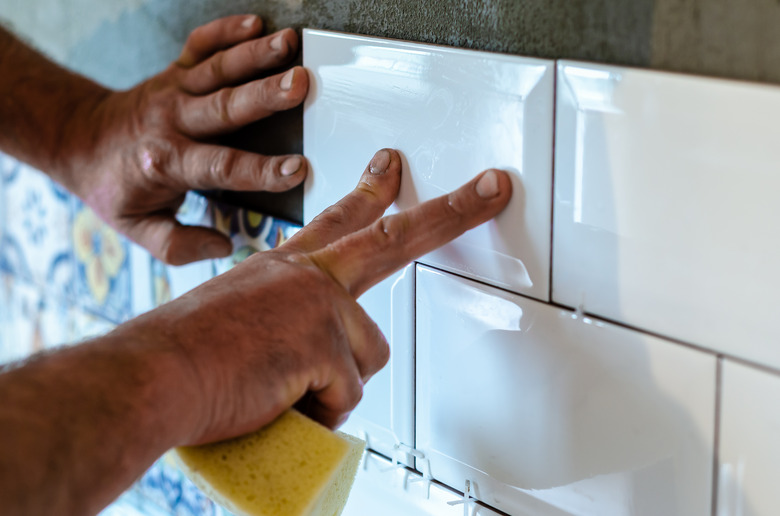Gray Vs. White Thin Set Mortar
We may receive a commission on purchases made from links.
Thinset mortar, whether gray or white, is an adhesive used to set tiles to walls, counters, floors or wherever the tile is being placed. You often see tile setters using a serrated trowel over thinset mortar to create a suction that better adheres the tile to the surface. Made of sand, water and cement, thinset can be modified to contain additives for increased bonding, such as that used on a vertical wall holding large tiles and backing tiles used in a shower for water resistance. The color of the thinset is dictated by the color of the tile, as both have the same composition.
Thinset Isn't Grout
Thinset Isn't Grout
People often confuse thinset with grout, not understanding that each has its own purpose when setting tile. Basically, thinset mortar is underneath the tile, while grout is between tiles. Regardless of whether you've chosen gray or white thinset mortar, when choosing tile grout, the color and the additives used in the grout can vary. A sealer, moisture barrier and stain resistance can be added to the polymer-enhanced Portland cement grout, and it comes in a variety of colors to complement the color of the tile.
Understanding Types of Thinset
Understanding Types of Thinset
There are two types of thinset mortar: unmodified and modified. Unmodified is simply sand mixed with cement, which is ideal for installing tile over cement. Modified has the sand and cement plus modifiers that are polymers, and it promotes a better curing process. Depending on the type of substrate, or base, you are using and whether the tile going over the thinset is ceramic or porcelain, the choice of the right thinset mortar is vital.
Ceramic tiles are absorbent, which means a lower-grade thinset works well with the tile. Subway tiles are good candidates for the unmodified thinset. Porcelain tiles are not absorbent and require a higher grade of thinset, which creates a greater bond between the tile and the substrate. Always check the back of the mortar bag to verify that the mortar is acceptable for the substrate you are using. Buying the lowest grade of either is not recommended.
Getting the Combinations Right
Getting the Combinations Right
You have chosen beautiful glass tiles for your backsplash, and now you have to select the thinset mortar and grout. Since the glass is transparent, choose a white thinset. Be sure the American National Standards Institute (ANSI) has approved the thinset you have selected, as the range of thinset mortar products offered by manufacturers varies according to grades, curing time, composition and price. The back of the bag indicates the ANSI recommendations.
Gray vs. White Thinset Mortar
Gray vs. White Thinset Mortar
The choice of thinset color is totally dependent on the color of the tile. A dark-colored tile, flagstone or slate looks best set with a gray thinset. If any of the mortar shows through the grout, the color is less apparent. Both white and gray are made of cement, with the white made with white cement and the gray composed of gray cement. It's not the color that determines its effectiveness but the modifiers contained within the thinset.
